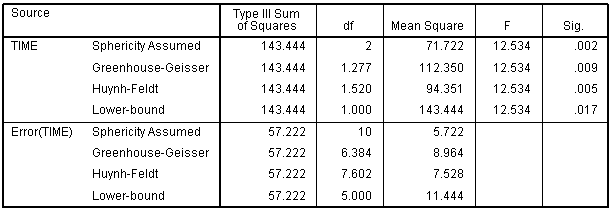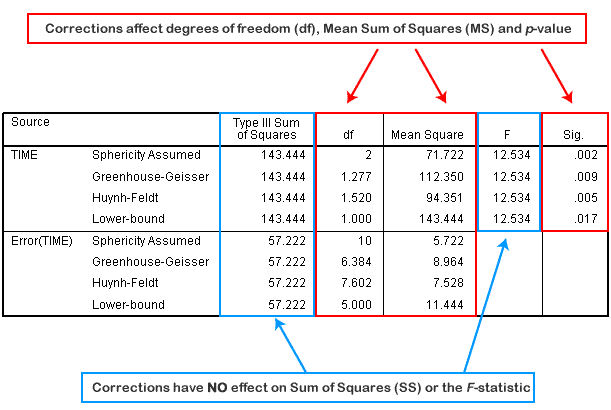Sphericity (cont...)
Greenhouse-Geisser Correction
The Greenhouse-Geisser procedure estimates epsilon (referred to as ![]() ) in order to correct the degrees of freedom of the F-distribution as has been mentioned previously, and shown below:
) in order to correct the degrees of freedom of the F-distribution as has been mentioned previously, and shown below:

Using our prior example, and if sphericity had been violated, we would have:

So our F-test result is corrected from F (2,10) = 12.534, p = .002 to F (1.277,6.384) = 12.534, p = .009 (degrees of freedom are slightly different due to rounding). The correction has elicited a more accurate significance value. It has increased the p-value to compensate for the fact that the test is too liberal when sphericity is violated.
Huynd-Feldt Correction
As with the Greenhouse-Geisser correction, the Huynd-Feldt correction estimates epsilon (represented as ![]() ) in order to correct the degrees of freedom of the F-distribution as shown below:
) in order to correct the degrees of freedom of the F-distribution as shown below:

Using our prior example, and if sphericity had been violated, we would have:

So our F test result is corrected from F (2,10) = 12.534, p = .002 to F (1.520,7.602) = 12.534, p = .005 (degrees of freedom are slightly different due to rounding). As with the Greenhouse-Geisser correction, this correction has elicited a more accurate significance value; it has increased the p-value to compensate for the fact that the test is too liberal when sphericity is violated.


